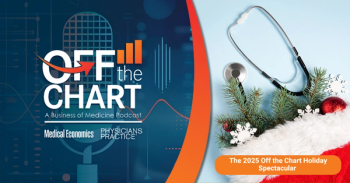
Hospitals charge private insurers more than double Medicare rates, RAND report finds
Study shows private insurers paid hospitals an average of 254% of what Medicare would have paid
Employers and private insurers paid hospitals an average of 254% of what
The report reveals that some states, such as Arkansas, Iowa, Massachusetts, Michigan, and Mississippi, had hospital prices under 200% of Medicare rates. In contrast, other states like California, Florida, Georgia, New York, South Carolina, West Virginia, and Wisconsin saw prices soar above 300% of Medicare payments.
Peter S. Hussey, director of RAND Health Care, emphasized in a statement the importance of this data for employers: "The utility of this work is that it gives employers important tools they can use to become better-informed purchasers of health care services. Hospitals account for the largest share of health care spending in the U.S., so this report also provides valuable information that may aid policymakers interested in curbing health care costs."
Hospital services made up 42% of total U.S. personal health care spending for privately insured individuals in 2022, with hospital price hikes driving growth in per capita spending among the 160 million Americans with private insurance. Despite federal policies requiring hospitals to disclose prices for at least 300 “shoppable” services and insurers to post their negotiated rates, compliance has been spotty. Many hospitals have not met these requirements, and insurer-posted data often include duplicative information that makes them difficult to use.
The RAND study found that in 2022, relative prices for inpatient hospital facility services averaged 255% of Medicare prices, while outpatient services averaged 289%, and professional services averaged 188% of Medicare rates. Prices for common outpatient services in ambulatory surgical centers averaged 170% of Medicare payments.
Brian Briscombe, who leads the RAND hospital price transparency project, noted in a statement the implications of these findings: "The widely varying prices among hospitals suggest that employers have opportunities to redesign their health plans to better align hospital prices with the value of care provided. However,
For the first time, the RAND study also examined the cost of specialty prescription drugs, comparing prices for medications administered in hospital settings versus those given in physician offices. The study found that commercial insurance prices for select drugs administered in hospitals averaged 278% of the average sales price, compared with 106% of the average sales price paid by Medicare.
The report highlighted that very little variation in prices is explained by the share of patients each hospital has covered by Medicare or Medicaid. Instead, hospital market power plays a more significant role in price variation.
Based on data from over 4,000 hospitals in 49 states and Washington D.C. from 2020 to 2022, the study analyzed health care claims from self-insured employers, state all-payer claims databases, and health insurance plans that chose to participate. In total, about 6% of U.S. commercial insurance hospital spending was examined. For each private claim, researchers re-priced the service using Medicare’s formulas to benchmark against Medicare payments, which are designed to offer modest profit margins for efficient hospitals.
Unlike many other studies, the RAND report names hospitals and hospital systems, providing a detailed list of both relative and standardized prices for each facility, as well as CMS Hospital Compare star ratings.
Newsletter
Stay informed and empowered with Medical Economics enewsletter, delivering expert insights, financial strategies, practice management tips and technology trends — tailored for today’s physicians.








